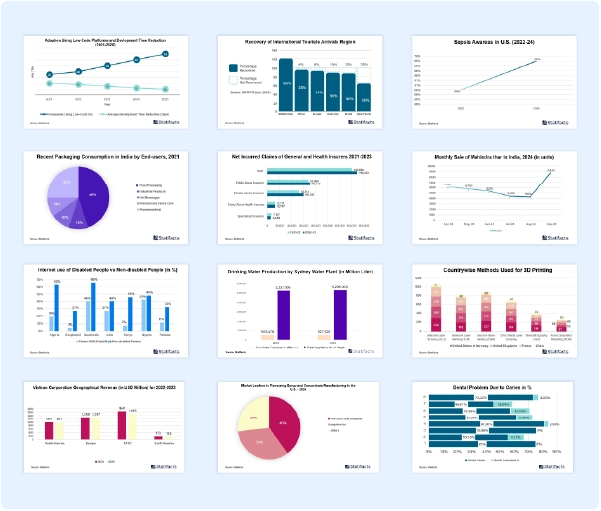

Our customers work more efficiently and benefit from
The global single-use pump market size surpassed USD 488 million in 2024 and is predicted to reach around USD 1,701 million by 2034, registering a CAGR of 13.3% from 2025 to 2034.
| Industry Worth | Details |
| Market Size in 2025 | USD 6,380 Million |
| Market Size by 2034 | USD 11,430 Million |
| Market Growth Rate from 2025 to 2034 | CAGR of 6.7% |
The single-use pump market refers to the production, distribution, and use of the single-use pump, which features a disposable pump head and chamber that can be easily removed and replaced between production runs. The single-use pump technology includes five components: a seal, a seal cap, a spring barrel, a rotor with a plurality of cavities, and the housing with an integral membrane. Single-use pump technology characteristics include lower power consumption, low cost, single-use, compatibility with a high range of chemically active fluids, compatibility with a high range of particulate count fluids, high range of operating pressures, constancy, temperature dependency, viscosity dependency, pressure dependency, flow rate dependency, operating time dependency, and a high range of flow rates.
The benefits of single-use pumps include the ability to pump aggressive solvents, acids, and alkalis, allowing the pre-mixing of two liquids, allowing headspace replacement, the pump can be positioned in the disposable or the device, the pack is sealed by a pump under instantaneous pressure, will self-prime even if empty at the start, and reduces oxidation of food and drinks. The benefits of single-use pumps in pharmaceutical production processes have virtually reduced the cost and downtime that were previously required to clean and validate pumping systems. Pumps can help to increase the efficiency of a system by reducing the amount of energy required to move fluids, and they can be used to dangerous or toxic fluids, reducing the risk of exposure to workers.
Infrastructure development is driving the growth of the single-use pump market. Infrastructure can reduce the cost of delivered goods, remove productivity constraints, facilitate the physical mobility of people and products, and increase competitiveness. Infrastructure plays an important role in shaping economic development by improving productivity, stimulating growth, and enhancing the overall quality of life. Infrastructure is essential to a region’s economic development. It allows business operations and private jobs, promotes the exchange of goods and services, and reduces supply chain disruptions. Infrastructure development is an important aspect of society, economic growth, and prosperity. It can enhance the quality of life by providing better access to essential services like clean water and electricity. The infrastructure supports the development of civilization worldwide. Governments, institutions, multinationals, and other corporate organizations commit significant resources to build and maintain many infrastructures to achieve their objectives and make life easier.
Water and wastewater management and the increasing adoption of single-use technologies are driving the growth of the single-use pump market. These single-use pumps are used in wastewater treatment plants to transfer sensitive or fragile liquids like sludges or slurries; other types of pumps may damage them. Pump stations help in waste management, reducing flooding risks, enhancing water pressure, and operating with minimal supervision. They are beneficial in effectively transporting water or sewage, especially in areas with challenging topographies. Effective gray water management helps prevent blockages, maintain hygiene, and support sustainable water reuse.
Rising adoption of single-use technologies benefits include with disposable systems the need for cleaning, sterilization, and validation between production runs is eliminated. This significantly lowers change over time, making operations faster and more effective. In addition, the disposable elements of single-use technologies can be quickly assembled and disassembled, reducing the amount of downtime needed for cleaning, sterilization, and maintenance. This can allow for faster turnaround of the GMP equipment, thus leading to faster production cycles and greater productivity.
For any questions about this dataset or to discuss customization options, please write to us at sales@statifacts.com
| Stats ID: | 8168 |
| Format: | Databook |
| Published: | April 2025 |
| Delivery: | Immediate |
| Price | US$ 1550 |

| Stats ID: | 8168 |
| Format: | Databook |
| Published: | April 2025 |
| Delivery: | Immediate |
| Price | US$ 1550 |

You will receive an email from our Business Development Manager. Please be sure to check your SPAM/JUNK folder too.

Unlock unlimited access to all exclusive market research reports, empowering your business.
Get industry insights at the most affordable plan
Stay ahead of the competition with comprehensive, actionable intelligence at your fingertips!
Learn More Download
Download